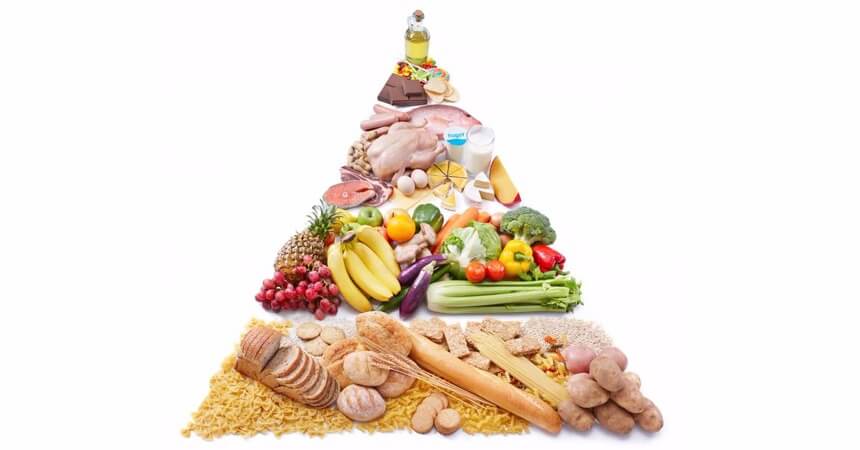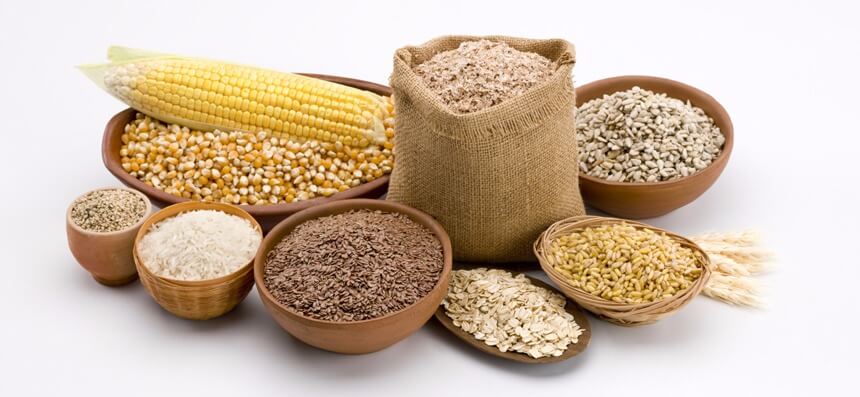cereals are the foods that are at the base of most of the food pyramids elaborated and accepted by different health sectors.
These same sources calculate that 60% of the calories in our diet must come from carbohydrates . As the main energy contribution of cereals is in the form of carbohydrates, in this way they justify their privileged position in the pyramid and warn about the possible risks in our energy metabolism in case of consumption below the recommended.

Food pyramid
Cereals in our diet
Despite this, in recent years there has been a debate about the real position that cereals should occupy in the pyramid. The progressive increase in those affected by type II diabetes and the high percentages of people with overweight and obesity in societies that follow a classic modern diet, has forced a rethink of the pyramid foods to follow to have a healthy diet. This debate has led to specifications for the different types of cereals, their varieties and sub-classes. It is concluded that we cannot generalize and include them all in a single category, regardless of the type of cereal, its degree of refinement, etc.
Recommended amount of cereals
One of the main problems of today’s modern diet, followed by the majority of the population, is that the number of these recommended servings of cereals is exceeded. In addition, there is also a scarce variety of cereals consumed, being practically restricted to rice and wheat, both of the refined type.
Currently, the food pyramid of the Spanish Society of Community Nutrition (2006) proposes a consumption 4-6 daily servings of cereals (in the form of grains -rice, oats, etc., flours and their derivatives -bread, pasta, pastries, etc.) and potatoes . The Harvard pyramid (2001) maintains cereals at the base of the pyramid but specifying that cereals must be whole and sharing this position with fruits and vegetables . Refined cereals are relegated to sporadic consumption positions. Other food pyramids change the position of cereals to places less frequently.
As a general advice, we can say that three main aspects must be taken into account for the consumption of cereals.
Tiendaculturista bets on a moderate consumption of cereals . They are not necessary foods in daily frequencies but they can be taken 2-3 times a week as long as we are not affected by pathological processes or in recovery phases, in which their consumption would be sporadic.
We must opt for the whole forms of cereals , avoiding refined ones, which greatly alter blood sugar levels and require activating complex endocrine processes for their use, storage and transformation (insulin, glucagon, etc.).

Cereals – staple food
Finally, we must provide variety, reducing the consumption of wheat especially, and betting on other varieties such as buckwheat, rice pasta, soybean paste, quinoa, kamut, oats, etc. Some of these varieties (wheat, oats, etc.) contain gluten and their consumption should be controlled in cases where we suspect gluten sensitivity, allergy and, of course, celiac disease.
What are the benefits of consuming whole grains?
- Low in saturated fat, but a source of polyunsaturated fats, including omega-3 linolenic acid.
- Cholesterol free.
- High in soluble and insoluble fiber, and resistant starch.
- An excellent source of carbohydrates.
- An important source of proteins.
What happens if you eat cereal every day?
Eat a bowl of cereal twice a day can lead to significant and sustained weight loss, according to research. A study has revealed that eating cereal for breakfast and lunch, and then a normal dinner, can help obese people lose weight.
Are cereals fattening?
When trying to lose weight, you can eat low-calorie cereals to start your day. Although these breakfast foods can be low in calories, they are often loaded with added sugars. Also, many low-calorie cereals lack the healthy proteins and fats that help you feel full.
